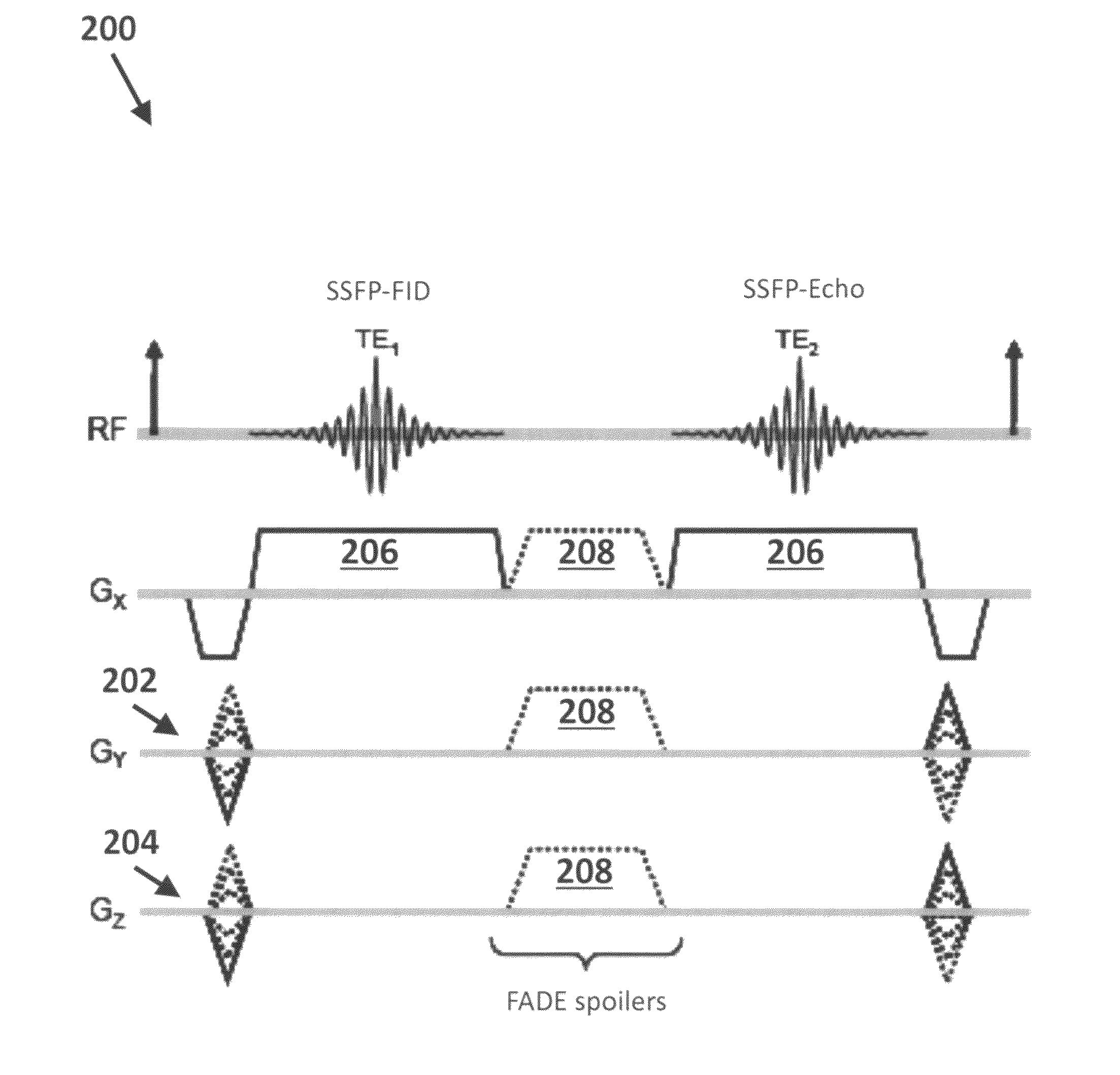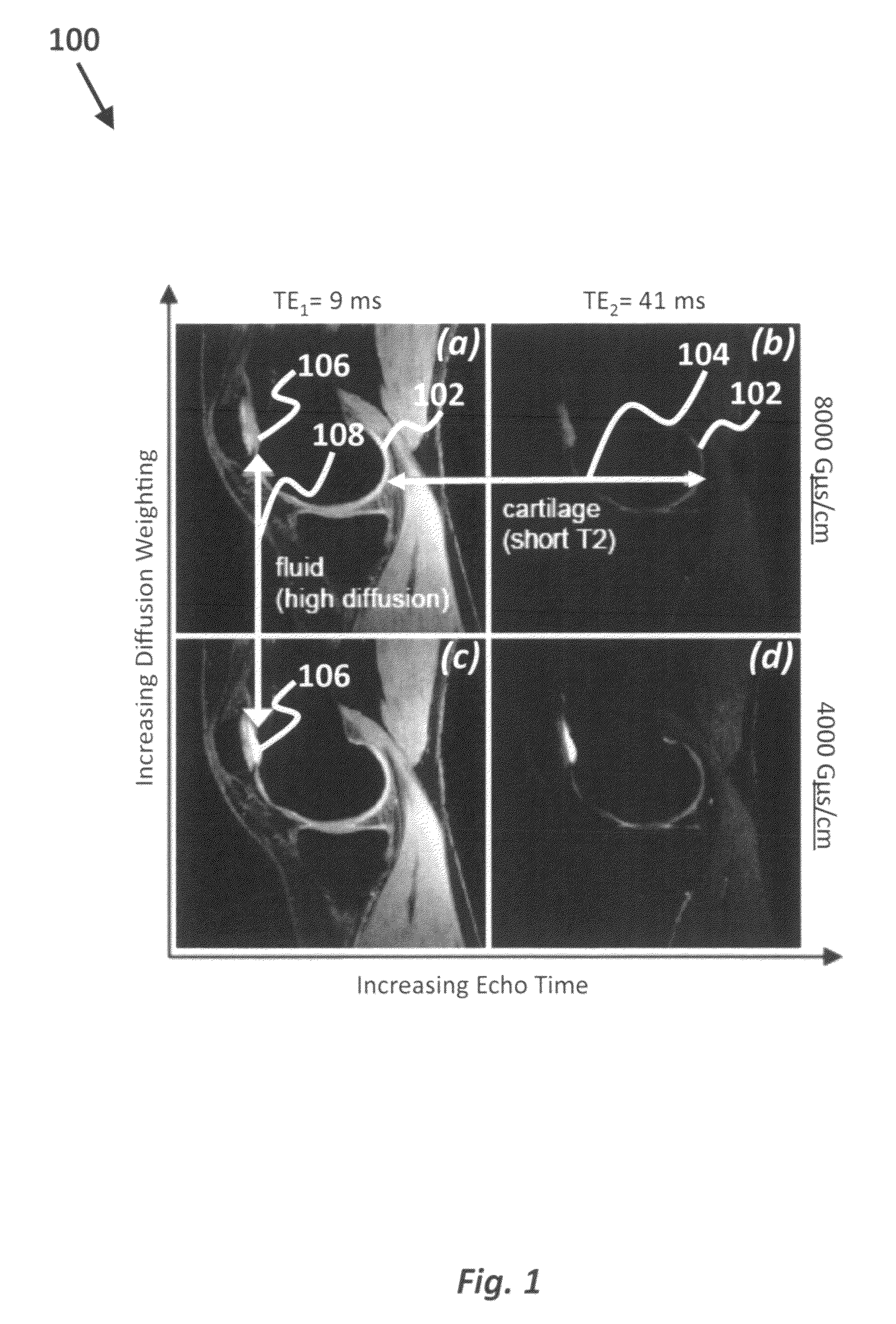T2-weighted and diffusion-weighted imaging using fast acquisition with double echo (FADE)
a double echo and acquisition speed technology, applied in the field of magnetic resonance imaging, can solve the problems of affecting the quantification of diffusion, the inability to acquire high-resolution t2- and diffusion-weighed images in reasonable scan times, and the loss of signal relative to stationary spins
- Summary
- Abstract
- Description
- Claims
- Application Information
AI Technical Summary
Benefits of technology
Problems solved by technology
Method used
Image
Examples
Embodiment Construction
[0035]The current invention provides a method to obtain high-resolution three-dimensional T2- and diffusion-weighted images. By using a steady-state sequence, these images are acquired in short scan times with low specific absorption rate (SAR) and low image distortion.
[0036]The fast acquisition double echo (FADE) sequence was originally designed to provide T2 contrast. Others have used SSFP-Echo images (alone) acquired with different spoiler areas to evaluate diffusion. The method according to the current invention achieves both results with one fast sequence by modifying the echo times and the spoiler gradient areas. It also allows correction of each calculation (T2 and apparent diffusion coefficient) for the effects of the other parameter.
[0037]T2-weighted and diffusion-weighted imaging are widely used in clinical MRI. High-resolution images with T2 or diffusion contrast are challenging due to the use of echo trains (both spin echo and EPI) and due to SAR limitations. In this inv...
PUM
 Login to View More
Login to View More Abstract
Description
Claims
Application Information
 Login to View More
Login to View More - R&D
- Intellectual Property
- Life Sciences
- Materials
- Tech Scout
- Unparalleled Data Quality
- Higher Quality Content
- 60% Fewer Hallucinations
Browse by: Latest US Patents, China's latest patents, Technical Efficacy Thesaurus, Application Domain, Technology Topic, Popular Technical Reports.
© 2025 PatSnap. All rights reserved.Legal|Privacy policy|Modern Slavery Act Transparency Statement|Sitemap|About US| Contact US: help@patsnap.com



